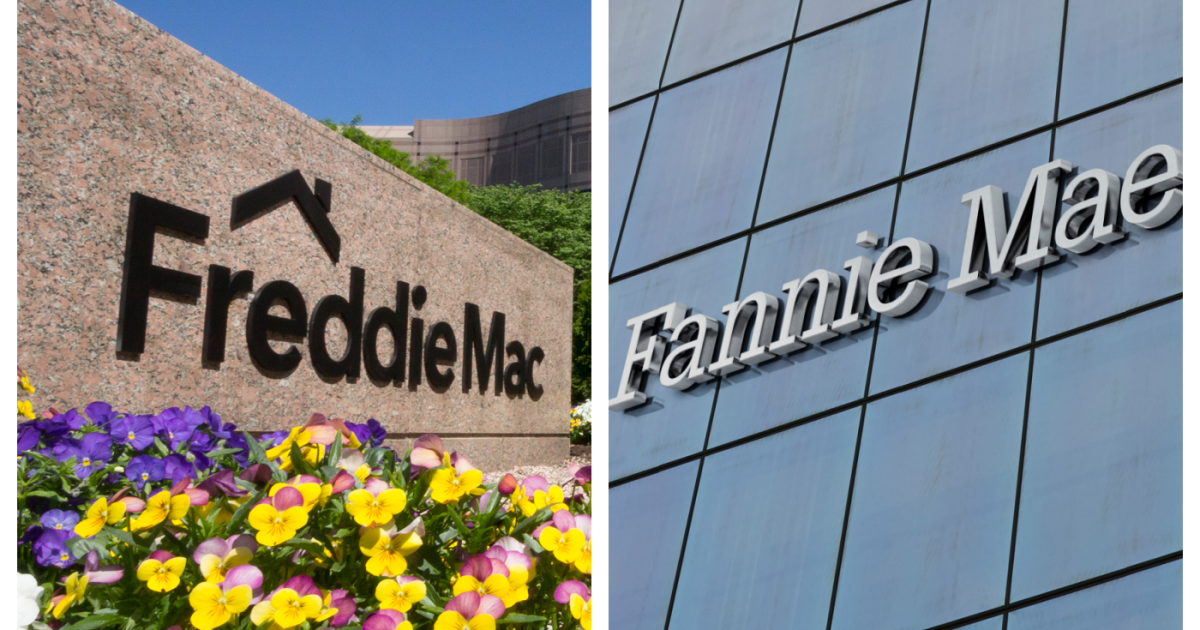
In accordance with the Housing and Economic Recovery Act of 2008, the Federal Housing Finance Agency periodically establishes affordable housing goals for Fannie Mae and Freddie Mac. These goals were discussed in a previous column.
The goals apply to mortgages on both single-family owner-occupied properties and mortgages on multifamily properties with 5 or more units. Three of the single-family goals are based on the percentages of single-family home purchase mortgages for: low-income families with incomes no greater than 80 percent of area median income; very low-income families, with incomes no greater than 50 percent of AMI; and homes in low-income/high-minority areas. There is also a goal for refinance mortgages for low-income families.
For each single-family goal, a “benchmark level” is set in advance. Actual performance is then compared with this benchmark, and also with “market performance” on the goal, defined as the percentage of all corresponding home purchase or refinance mortgages originated in the primary mortgage market qualifying for the goal. This measure is based on FHFA’s analysis of data submitted by lenders to the Consumer Financial Protection Bureau in accordance with the Home Mortgage Disclosure Act. An Enterprise passes a goal if its performance exceeds either the benchmark level or market performance.
The multifamily goals are expressed as minimum numbers of goal-qualifying units financed by each Enterprise. There are three categories of multifamily goals: a low-income goal, the number of units financed that are affordable to low-income families; a very low-income goal, the number of units affordable to very low-income families; and, since 2015, a small multifamily low-income goal, the number of units in 5-50 unit properties affordable to low-income families.
FHFA published proposed goals for each year, 2022 to 2024, in the Federal Register on August 25, 2021, with comments due by October 25, 2021. The proposed goals were generally considered challenging, with the notable exception of the proposed low-income areas goal of 4 percent.
The most important statutory factors in setting a single-family goal are Enterprise past performance on the goal and projected market performance, the share of mortgages originated in the primary market qualifying for the goal. Enterprise performance on the low-income areas goal averaged 8.7 percent for Fannie Mae and 8.3 percent for Freddie Mac over the 2018 to 2020 period. Thus the proposed goal of 4 percent would have been less than half the average performance for each GSE over the 2018 to 2020 period, contrary to statutory language.
FHFA projects that market performance on this goal will be 10.0 percent for 2022, 10.3 percent for 2023, and 10.2 percent for 2024. Thus, the proposed 4 percent goal would have been less than 40 percent of projected market performance. Several affordable housing groups, including the National Community Reinvestment Coalition, commented that the goal should be set higher in light of past performance. However, in the final rule, published on December 28, 2021, FHFA retained this goal at 4 percent for 2022-24.
The low-income multifamily goal for 2018 to 2020 was 315,000 units, and both Enterprises surpassed this by sizable margins. FHFA proposed to increase this to 415,000 units for each year from 2022 to 2024. The very low-income multifamily goal for 2018 to 2020 was 60,000 units, and both Enterprises also surpassed this by sizable margins. FHFA proposed to increase this to 88,000 units for each year, 2022 to 2024.
The small multifamily low-income goal for 2018 to 2020 was 10,000 units per year, and both Enterprises met this, with Fannie Mae averaging more than 17,000 units per year (22,000 units in 2020) and Freddie Mac averaging more than 34,000 units per year. FHFA proposed to increase this goal to 23,000 units for each year, from 2022 to 2024. Freddie Mac was generally supportive of the proposed levels for the multifamily goals, but Fannie Mae strongly opposed the proposed small multifamily low-income goal.
For 2010 to 2014 the two multifamily goals in effect at that time were somewhat lower for Freddie Mac than for Fannie Mae, but then FHFA decided that since both Enterprises were involved in the same mortgage markets, all goals should be set at the same level for both, and this was the case for 2015 to 2021. FHFA proposed to continue this pattern for 2022 to 2024, but in the final rule, the small multifamily goal for 2022 was reduced for Fannie Mae only by 26 percent from the level in the proposed rule, from 23,000 to 17,000 units. This reduction was not mentioned as a possible change in the proposed rule, thus no comments were received on it.
The other two multifamily goals in the final rule for 2022 were at the same level as in the proposed rule for both Enterprises. But FHFA changed the effective date for all of the multifamily goals, from 2022 to 2024 to cover 2022 only, a step recommended by several commenters. Thus, FHFA will go through the rule and comment process again this year, to establish the multifamily goals for 2023 to 2024, or possible both this year and next, to establish the multifamily goals for 2023 and subsequently, for 2024.
